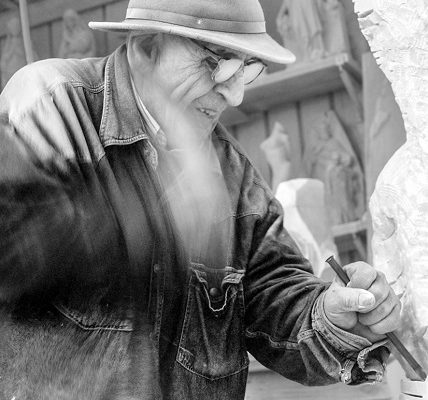Notable among the works going on view at the “Michelangelo and Versilia”show at the Italian Cultural Institute beginning December 4 will be the series “Homo Faber” (Working Man) by Polish photographer Henryk Hetflaisz. Hetflaisz’s series consists of 50 large-scale prints depicting marble carvers at work in the commune of Pietrasanta, Italy, in the Versilia region.
Versilia is famous for the Carrara marble of the Apuan Alps. The connection to Michelangelo is that his David was carved from Carrara marble. Today artists such as Damien Hirst send their work to be executed in the small town.
In addition to two original drawings by the Italian master, the exhibition will comprise a number of films and photographs of artisan workshops, with an emphasis on the theme of manufacture.
“Homo Faber,” which was first shown in the Piazza del Duomo in Pietrasanta in 2013, gives insight into the craft of the artegiani of Pietrasanta, honoring the craftsmen who are often overlooked in favor of the famous artists with whom they work.
Hetflaisz was born in 1978 in a small town in northeastern Poland, and now lives in Kent, England, with his partner Remy Blumenfeld. A childhood in a time and place where freedom of speech was limited had a great influence upon his work. As he told the Independent: “Faces were my preoccupation from early on—because people didn’t talk to me, I had to learn to read people’s thoughts.”
Henryk Hetflaisz’s “Homo Faber” series will be on view as part of “Michelangelo and Versilia,” which opens at the Italian Cultural Institute on December 4 and runs through January 4, 2015.
